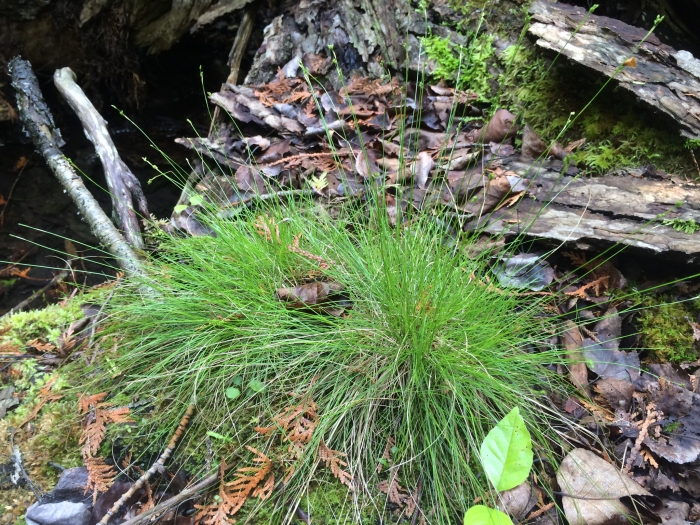Bristleleaf Sedge
(Carex eburnea)
Bristleleaf Sedge (Carex eburnea)
/
/

Derek
CC BY 4.0
Image By:
Derek
Recorded By:
Copyright:
CC BY 4.0
Copyright Notice:
Photo by: Derek | License Type: CC BY 4.0 | License URL: http://creativecommons.org/licenses/by/4.0/ | Rights Holder: Derek | Publisher: iNaturalist | Date Created: 2016-06-11T14:21:57Z |













































Estimated Native Range
Summary
Carex eburnea, commonly known as Bristleleaf Sedge, is a semi-deciduous perennial grass native to dry open woodlands, forest edges, and rocky slopes in the Eastern USA and Canada. It is a small and slender sedge, typically reaching 6-12 inches in height. Bristleleaf Sedge forms neat, fine-textured clumps and spreads gradually by slender, light brown rhizomes to form colonies. Each inflorescence, at the end of a culm, has one staminate (male) spike above two to three pistillate (female) spikes, each enclosed at the base by a tubular bract. The stems of the inflorescence and the pistillate spikes are very short at blooming time but lengthen significantly by seed maturity, allowing the clusters of achenes to overtop the withered staminate spike. The stem is always longer than the leaves. The plant’s inconspicuous greenish-white flowers appear in late spring to early summer.
Bristleleaf Sedge is valued for its fine foliage texture and ability to thrive in shaded conditions, making it an excellent ground cover for woodland gardens and shaded borders. It is also used to stabilize soil in restoration projects. In cultivation, it prefers part shade to full shade, consistent medium moisture, and well-drained soils. While it is low maintenance, it can be susceptible to leaf spot diseases in overly moist conditions. Bristleleaf Sedge is not known for aggressive roots or significant pest problems, and it is not typically invasive when grown outside its native range.CC BY-SA 4.0
Bristleleaf Sedge is valued for its fine foliage texture and ability to thrive in shaded conditions, making it an excellent ground cover for woodland gardens and shaded borders. It is also used to stabilize soil in restoration projects. In cultivation, it prefers part shade to full shade, consistent medium moisture, and well-drained soils. While it is low maintenance, it can be susceptible to leaf spot diseases in overly moist conditions. Bristleleaf Sedge is not known for aggressive roots or significant pest problems, and it is not typically invasive when grown outside its native range.CC BY-SA 4.0
Plant Description
- Plant Type: Grass
- Height: 0.5-1 feet
- Width: 0.5-1 feet
- Growth Rate: Slow
- Flower Color: N/A
- Flowering Season: Spring
- Leaf Retention: Evergreen
Growth Requirements
- Sun: Part Shade, Full Shade
- Water: Medium
- Drainage: Fast, Medium
Common Uses
Bird Garden, Deer Resistant, Drought Tolerant, Groundcover, Low Maintenance, Rock Garden
Natural Habitat
Dry open woodlands, forest edges, and rocky slopes
Other Names
Common Names: Bristle-Leaf Sedge , Ivory Sedge
Scientific Names: Carex eburnea , Carex alba var. setifolia , Carex alba , Carex setifolia
GBIF Accepted Name: Carex eburnea Boott